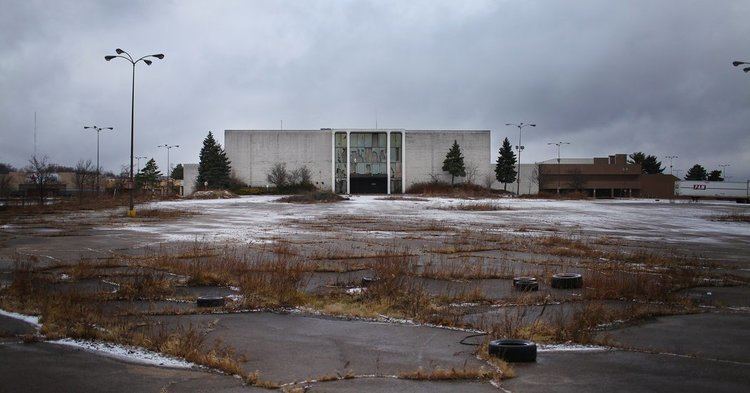 | ||
Dead mall series hickory ridge mall incredible 1990s food court memphis tn
A dead mall is a shopping mall with a high vacancy rate or a low consumer traffic level, or that is dated or deteriorating in some manner.
Contents
- Dead mall series hickory ridge mall incredible 1990s food court memphis tn
- Dead mall series sad depressing bristol mall in bristol va
- Word origins
- Socio economic decline
- Changes in the retail climate
- Redevelopment
- References
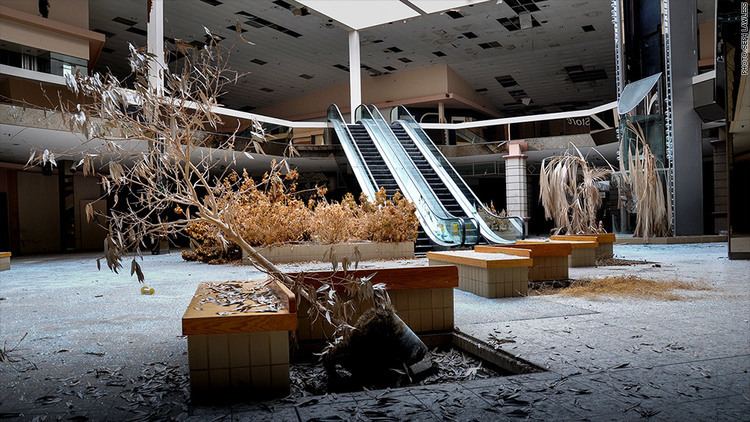
Many malls in North America are considered "dead" (for the purposes of leasing) when they have no surviving anchor store (often a large department store) or successor that could serve as an entry into or attraction to the mall.
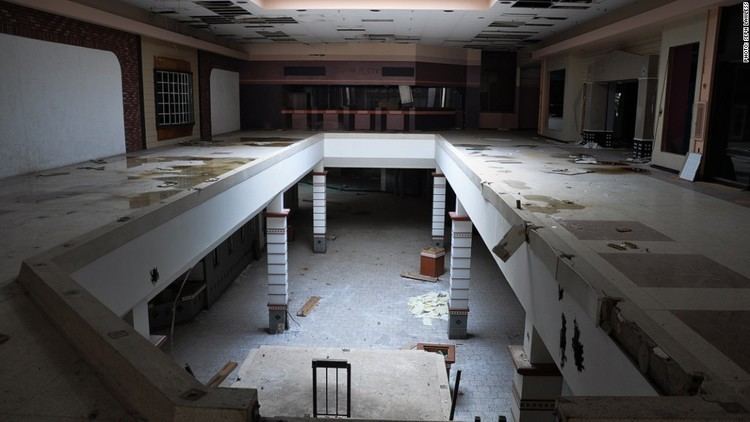
Without the pedestrian traffic that department stores typically generate, sales volumes decline for almost all stores and rental revenues from those stores can no longer sustain the costly maintenance of the malls. Without good pedestrian access, smaller stores inside malls are difficult to reach.

The now-vacant anchor store position may be referred to as a "ghostbox" and the outline of where signage once was indicates the branding or trademark of the former anchor as "label scar".
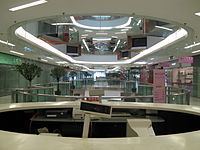
Dead mall series sad depressing bristol mall in bristol va
Word origins
Dead mall is a commercial real estate (property) term that has its origins in North America.
Socio-economic decline
In many instances, a mall begins dying when its surrounding neighborhood undergoes a socio-economic decline.
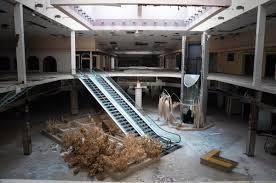
In the case of the Cloverleaf Mall in Chesterfield, Virginia which had operated successfully in the 1970s and 80s, by the 1990s "women, began staying away from the mall, fearful of the youth who were beginning to congregate there. People [said a former Cloverleaf manager] started seeing kids with huge baggy pants and chains hanging off their belts, and people were intimidated, and they would say there were gangs”.
Changes in the retail climate
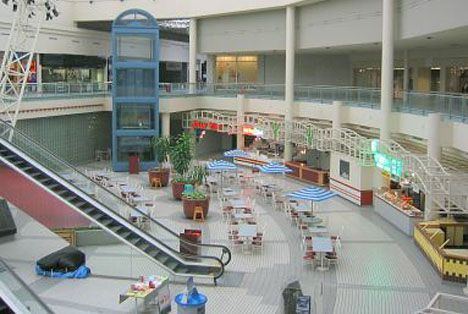
Structural changes in the department-store industry have also made survival of these malls difficult. These changes have contributed to some areas or suburbs having insufficient traditional department stores to fill all the existing larger-lease-area anchor spaces. A few large national chains have replaced many local and regional chains, and some national chains are defunct.
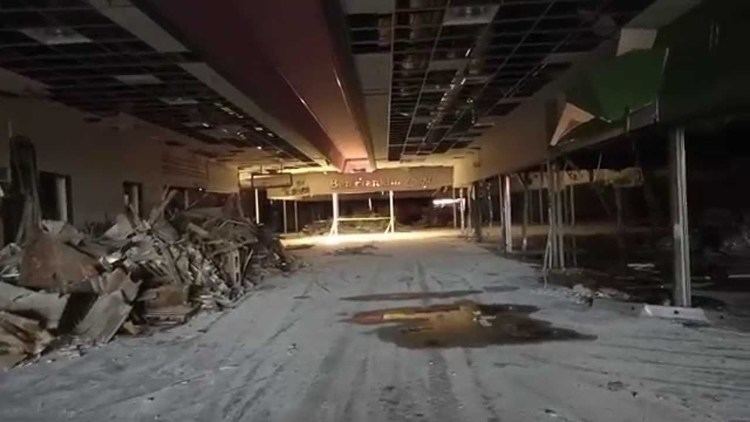
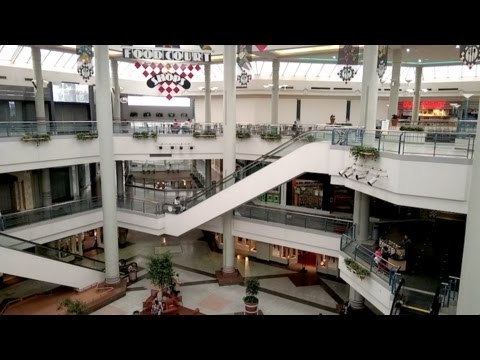
Malls are reliant on an older business model that could not change with the times, largely as most mall layouts are ill-suited for conversion to other uses, such as big box stores which started to grow in popularity in the 1980s. In the US (but to a lesser extent Canada) newer "big box" chains (also referred to as "category killers") such as Walmart, Target and Best Buy normally prefer purpose-built free-standing buildings rather than utilizing mall-anchor spaces. 21st-century retailing trends favor open air lifestyle centers; which resemble elements of power centers, big box stores, and strip malls; and (most disruptively for storefronts) online shopping over indoor malls. The massive change led Newsweek to declare the indoor mall format obsolete in 2008. The year 2007 marked the first time since the 1950s that no new malls were built in the United States. Most Canadian malls still remain indoors after renovations due to the harsh winter climate throughout most of the country, however the Don Mills Centre was turned into an open-air shopping plaza. Attitudes about malls have also been changing. With changing priorities, people have less time to spend driving to and strolling through malls, and during the Great Recession, specialty stores offered what many shoppers saw as useless luxuries they could no longer afford. In this respect, big box stores and conventional strip malls have a time-saving advantage.
In recent years, the number of dead malls has increased significantly because the economic health of malls across the United States has been in decline, with high vacancy rates in many of these malls. From 2006 to 2010, the percentage of malls that are considered to be "dying" by real estate experts (have a vacancy rate of at least 40%), unhealthy (20-40%), or in trouble (10-20%) all increased greatly, and these high vacancy rates only partially decreased from 2010 to 2014. In 2014, nearly 3% of all malls in the United States were considered to be "dying" (40% or higher vacancy rates) and nearly one-fifth of all malls had vacancy rates considered "troubling" (10% or higher). Some real estate experts say the "fundamental problem" is a glut of malls in many parts of the country creating a market that is "extremely over-retailed".
Some malls have maintained profitability, particularly in areas with frequent inclement weather (or otherwise weather undesirable for outdoor activities, such as shopping in an open-air shopping/lifestyle center) or large populations of senior citizens who can partake in mall walking. Combined with lower rents, these factors have led to companies like Simon Malls enjoying high profits and occupancy averages of 92%. Some retailers have also begun to re-evaluate the mall environment, a positive sign for the industry.
Redevelopment
Dead malls are occasionally redeveloped. Leasing or management companies may change the architecture, layout, decor, or other component of a shopping center to attract more renters and draw more profits. Several dead malls have been significantly renovated into open-air shopping centers.
Sometimes redevelopment can involve a switch from retail usage to office or educational use for a building, such as is the case with Park Central Mall in Phoenix, the Eastmont Town Center in Oakland, California, the Windsor Park Mall in San Antonio (now the global headquarters of Rackspace), Global Mall at the Crossings in Nashville, Tennessee, and the Coral Springs Mall in Florida.
As a last resort, the structure is demolished and the property redeveloped for other uses, known as building on a greyfield site.
In jurisdictions such as Vermont (with a strict permitting process) or in major urban areas (where open fields are long gone) this greyfielding can be much easier and cheaper than building on a greenfield site. A good example of this type of redevelopment is Prestonwood Town Center in Dallas and Voorhees Town Center in Voorhees Township, New Jersey.
